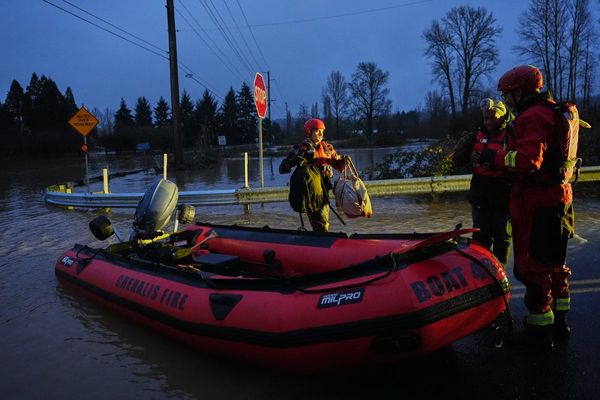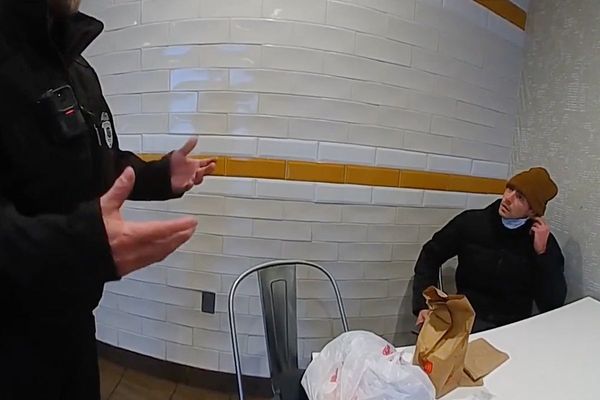
Words may give newspapers their voice, but pictures provide their soul. Eamonn McCabe, who died suddenly last Sunday, aged 74, was crucial in creating that authentic emotional spirit in the Observer and the Guardian for more than 40 years. He was that rare thing: an instinctive newspaper photographer whose work to daily and weekly deadlines was timeless enough to hang on gallery walls.
Most of us never master one creative discipline. Eamonn made himself a peerless practitioner of three: sports photographer, editor, portraitist. London-born, he first felt a sense of his vocation during the California summer of love, when he picked up a camera on a film course in San Francisco. He subsequently made his name on the back pages of this paper in a golden decade that began with a contract in 1976, and which earned him four sports photographer of the year awards.
Great photographers are invariably fiercely independent spirits, necessarily sharp elbowed in their pursuit of the angle and the light and the split second. McCabe was rare in harnessing those instincts to become the most generous and exacting of team players when, in 1987, at the age of 40, he took on the challenge of transforming the visual language of the Guardian, always insisting that photographs must do more than illustrate, they must be the wit and heart of stories themselves.
Having edited for 13 years, he then reinvented himself once again as one of the great magazine photographers – 29 of his images are included in the collection of the National Portrait Gallery.

He liked, with typical self-deprecation, to characterise his role in the years he worked for the Observer’s sports pages as being “the driver for Hugh McIlvanney” (the late, great Scottish sports writer returned the compliment in the piece reprinted right). Between them, they helped to establish a kind of Sunday sports journalism full of operatic emotion and muddy pathos. Eamonn’s pictures were all stories in their own right. His study of Björn Borg’s backhand made an unsurpassed essay of sport’s new imperative: focus; the sinking Boat Race crew was one of those always-be-an-England moments of heroic comedy; Kevin Keegan’s muscle-packed celebration seemed to be choreographed just for Eamonn’s camera. Each picture speaks of the last years when sport was still all about Saturday night and Sunday morning and McCabe and his great friend and rival on the Sunday Times, Chris Smith, slugged it out as, colleagues recalled, the “Ali and Foreman” of photojournalism.
Roger Alton, former Observer editor and long-term friend, recalls McCabe as “the greatest of guys and a shocking loss”. He represented, Alton suggests, to begin with, all the best of a pre-digital world: “In these days when literally tens of thousands of photos arrive on the screens of newspaper picture editors every day, Eamonn was of the era where he would call you from wherever to tell you he had just taken the front page or back page picture. There wasn’t a choice of 27,000, just the one, Eamonn’s – and he’d be holding the half-developed print out of the car window to dry it in time.”

McCabe’s lifelong eye for sporting joy became something far more complicated in 1985 when he was on assignment as a match photographer at the European Cup Final in Heysel, and witnessed close up the tragedy that left 39 people crushed to death. He won a News Photographer of the Year award for that work, but the fact of it was also part of his reason for moving on from match days to become an editor. A natural teacher and generous mentor, he sought out young talents in his own image: those with the visual intelligence and technical skill to discover human moments. Murdo MacLeod was one. “I was based in Scotland,” MacLeod says, “about as far away from Guardian HQ as possible. But even on the phone you could hear the piratical glint in Eamonn’s eye as we hatched a plan for a picture. He had a rare gift for talking about photography and he endlessly saw positive possibilities – a rare quality in an editor. Also, he was always lots of fun.”
Those qualities also made Eamonn a favourite collaborator for the papers’ best writers. Richard Williams worked with him over many years. He suggests that the Heysel photographs revealed all his qualities. “Eamonn wasn’t a war photographer. He wasn’t Don McCullin. He could have turned away. But he didn’t flinch, and as a result he gave us something that expressed, as no words could do, the full horror of that evening.
“The second, less important thing is the pleasure he always took in the chance to photograph musicians [see his portrait of Tom Waits above] and to talk about music. I discovered that when we went to France together to see Marcus Miller, who had played bass with Miles Davis. Eamonn was a fan – but as with sporting heroes, he never let his enthusiasm get in the way of the need to get the best shot. In terms of visual journalism, he was pretty much the ideal combination of reporter and artist.”







